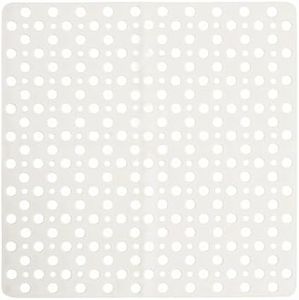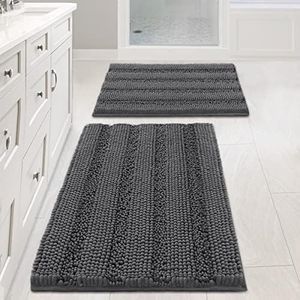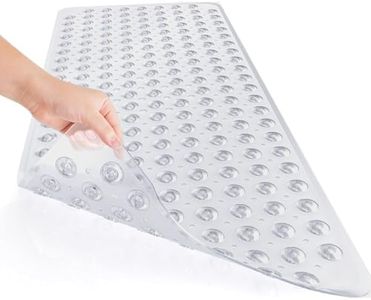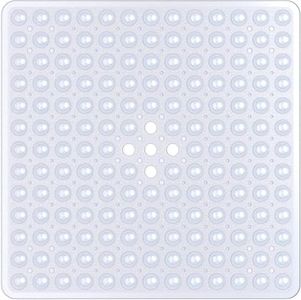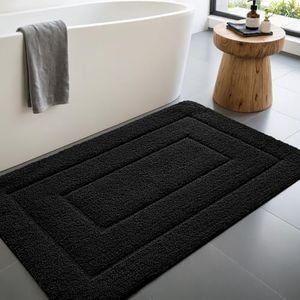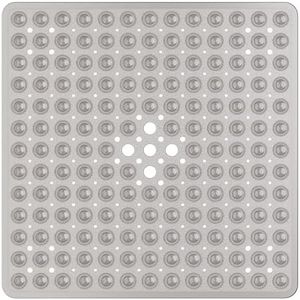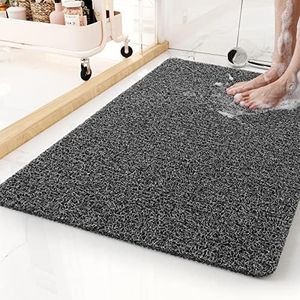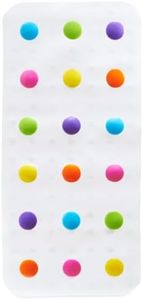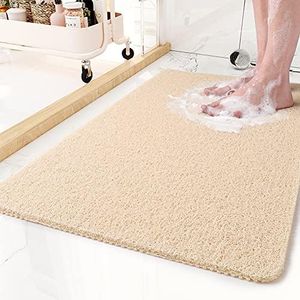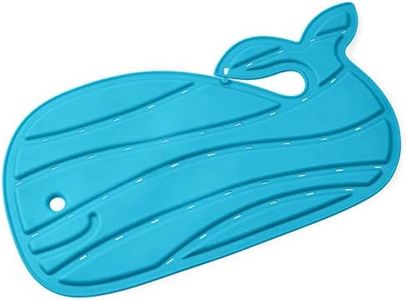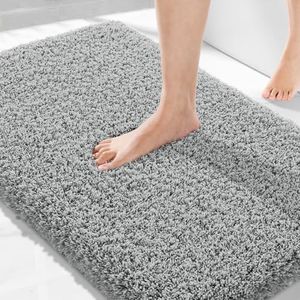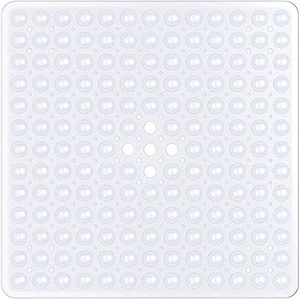We Use CookiesWe use cookies to enhance the security, performance,
functionality and for analytical and promotional activities. By continuing to browse this site you
are agreeing to our privacy policy
10 Best Non Slip Bath Mats
From leading brands and best sellers available on the web.Buying Guide for the Best Non Slip Bath Mats
Choosing the right non-slip bath mat is important for bathroom safety and comfort. The main goal is to prevent slipping while providing a secure, comfortable surface to stand on. When shopping for a non-slip bath mat, you'll want to consider factors like grip, size, material, drainage, and ease of cleaning. Understanding these features helps match the mat to your bathroom needs and your personal preferences. Start by thinking about who will use the mat (children, seniors, or adults), how often it will be used, and how big your shower or tub area is.Non-Slip BackingThe non-slip backing is the part of the mat that touches your tub or bathroom floor and keeps it in place. This feature is crucial for preventing accidents, as it grips the surface to minimize the chances of the mat slipping out from underfoot. Backing types include suction cups, textured rubber, or adhesive surfaces. Suction cups are a great fit for smooth, non-textured tubs, offering a firm hold, while rubber or high-friction materials are suited both to tiled floors and textured surfaces. Consider where you'll use the mat to decide which type of backing provides the safest and most reliable grip for your bathroom.
MaterialThe material of the bath mat affects comfort, durability, and maintenance. Common materials include rubber, PVC, fabric, and microfiber. Rubber and PVC mats are popular for their strong grip and easy cleaning, but may feel less soft underfoot, while fabric or microfiber options are softer and more absorbent, but may take longer to dry and can be harder to keep clean. If you prioritize safety and easy maintenance, rubber or PVC can be ideal. If comfort is a top need, especially for kids or seniors, consider soft microfiber options but be ready to wash them regularly.
Size and ShapeThe size and shape determine how much of your floor or tub the mat covers and whether it fits well in your bathroom. Bath mats come in standard rectangles, squares, and even oval or contour shapes. You should measure your bath or shower space and pick a mat that covers the key standing areas without overlapping the sides too much, as excess can make the mat unstable. For tubs, a mat that runs the full length may be safest for getting in and out, while for showers, a mat that covers the central area usually works best.
Drainage HolesDrainage holes or slots in a mat help water flow through so it doesn't pool on top, speeding up drying and reducing the chance for mold or mildew to grow. Mats without proper drainage tend to stay wet longer, which can be unsanitary and cause the mat to lose grip over time. If your bathroom is prone to staying damp or if multiple people use the shower in a row, choose a mat with plenty of wide drainage holes for healthier, faster drying.
Ease of CleaningSome bath mats are machine washable, while others just need to be rinsed and air-dried. Regular cleaning is important for hygiene and keeping the mat grippy. Mats made from rubber or PVC usually just need a periodic rinse and dry, while microfiber and fabric mats may need to go into the washing machine. If you have a busy schedule or want minimal effort, look for a mat labeled as easy or machine-washable, but always make sure to follow the care instructions to keep it effective.
Comfort and ThicknessThe feel of the mat under your feet can affect your showering experience, especially if you stand for long periods. Thicker mats can provide more cushioning but may also take longer to dry. Thinner mats usually dry faster and cling better to the floor, but may be less comfortable. If you have sensitive feet or prioritize a plush feel, opt for a thicker or padded mat, but always ensure it still offers good grip and quick drying to maintain safety.
